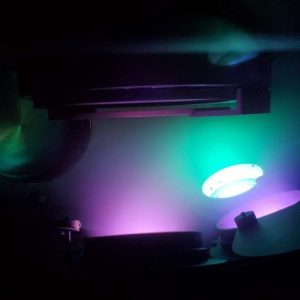
The VINSE cleanroom can now deposit up to three materials at once in a vacuum environment using electron beam evaporation and resistive thermal evaporation in the Angstrom Multimode and Angstrom Resistive systems. The amount deposited from each material per second can be independently controlled. Each material source has a separate thickness sensor for measuring thickness and rate of material deposition, and there is minimal crosstalk between the sensors to enable accurate measurements of the rate of material deposition. Thus, the relative amounts of the different materials can be controlled between different depositions and fine-tuning of material composition within a thin film layer. Additionally, the software automatically syncs the material warmup stages between the different materials so that all the materials to be deposited will be ready at the same time.

In the Angstrom Resistive deposition system, up to three resistive thermal evaporation sources can be operated simultaneously to deposit metals. In the Angstrom Multimode deposition system, up to one electron beam evaporation source and up to two resistive thermal evaporation sources can be operated simultaneously. The electron beam source can deposit insulators, semiconductors, and conductors including magnetic materials while the resistive sources can deposit metals. For a full list of available materials, please email Dr. Christina McGahan. This capability enables the creation of alloys and hybrid materials with precise control of the fraction of each source material. The figure below demonstrates the creation of a 1:10 aluminum:silver film for a mirror surface, where the mixed film has optical properties between that of the source materials and is smoother than a pure silver (Ag) film due to the addition of aluminum (Al). To deposit up to three materials simultaneously using direct current and/or radio frequency sputtering with independent power control but not rate measurement, the AJA Sputter deposition system can be used.